Hi all! My name is Carolyn Latham and I am a local physical therapist and fellow running enthusiast!
As a PT, I am passionate about helping people get out of pain and injury. However, you know what I’m even MORE passionate about? Helping people stay out of pain and stay injury-free in the first place.
How do we stay pain and injury-free? I recommend adhering to, what I call, a “Prehab” routine. Prehab, short for prehabilitation or preventative rehabilitation, is the proactive approach to injury; we are not reacting to injury, we are actively working to prevent it! Obviously we cannot predict the future but we can anticipate injuries based on what we know typically afflicts runners. Every person is different and we will all have repetitive injuries present in different ways based on our stride, body type, volume of training etc. but we can anticipate and proactively try to prevent injuries based on our general knowledge of “runner injuries”.
What are the “typical”, repetitive runner injuries? You’ve probably heard of these: runner’s knee, IT band syndrome, achilles tendonitis, shin splints, plantar fasciitis…
These injuries can begin due to a multitude of reasons, some of which you can’t always prevent. For example, you might take a fall directly onto your kneecap while running which then causes some inflammation around the knee cap which eventually turns into some general “runner’s knee” or patellar tendonitis.
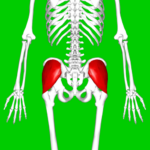
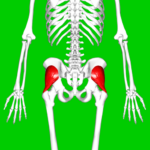
However, sometimes “runner’s knee” or patellar tendonitis starts cropping up because of weakness in the hips causing medial knee collapse, abnormal pull through the patellar tendon which then causes slight irritation and eventually, over a number of steps and miles, turns into tendonitis. This possibly could have been prevented by a proper prehab routine.
Maybe you have heard that runners don’t activate their glutes as effectively as one would like? This is a general statement but fairly accurate; a lot of runners highly benefit from glute activation work…enter PREHAB! Properly activating and engaging your glutes, especially your gluteus medius and gluteus minimus, can help prevent injuries spanning from low back pain, all the way down to ankle rolls. Keeping the glutes active through activation exercises can help many runner ailments. See “Side Stepping” and “Monster Walks” exercises for how to activate your glute med and min prior to your next run!
The overarching sedentary lifestyle that most of us live by, despite being active runners, can wreak havoc on our bodies; especially our hip flexors. The hip flexors, psoas and iliacus muscles, will tighten with prolonged sitting. Upon standing, because of the nature of our bodies, lumbar spine, and pelvis, instead of stretching out, a tight psoas muscle will instead cause increased pull on the lumbar spine and create an anterior pelvic tilt. This has repercussions up and down the kinetic chain of our body; it might not cause hip pain but it could cause knee pain, low back pain, and even alter our running stride…which then can lead to other issues. Working on stretching the hip flexor muscles and also activating them can help reduce unwanted injuries that stem from hip flexor dysfunction. See “Hip Flexor Stretch” for how to counteract prolonged sitting and tightening hip flexors.
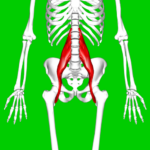
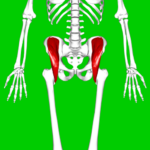
Knee pain can be caused by a multitude of reasons. The medial quad, less commonly known as the vastus medialis muscle, will typically be the weaker of the 4-part quadriceps muscle. Insert “chicken or egg” discussion here. At the end of the day, if your medial quadricep is weak, you will get increased pull through your lateral quadricep which can then lead to various knee injuries…patellar tendonitis, quadriceps tendonitis, IT band syndrome, meniscus irritation or tearing…Keeping your medial quadricep muscle active and strong is an easy prehab activity. See “Terminal Knee Extensions” (TKEs) exercise!
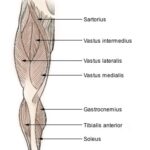
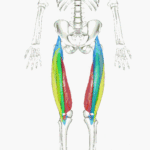
This is not an exhaustive list by any means. However, in our society, time is incredibly limited. Part of my job is to find ways to help people be injury-free in the most effective way possible. Of course there are many many more exercises that I would say are incredibly important and beneficial but when it comes to maximizing your time and effort, from my professional experience, these four exercises are the best for runners who are trying to prevent the more common injuries that sideline us.
For more information or to have more specific questions regarding injury prevention answered, email Dr. Carolyn Latham, PT at carolyn@verityptw.com.

Exercises
Side Stepping
- Start with the band around your ankles and in a small squat position
- Take 10 steps to the right and then 10 steps to the left
- Focus on leading with your heel. Do not let your toes turn out; this will activate the hip flexor instead of the lateral hip stabilizers (glute med and glute min) which are the target muscles of this exercise
- Stay in the small squat position the whole time. Imagine you have a pencil on your forehead and “draw” a straight line as you are stepping, rather than an up-and-down line
Monster Walks
- Start with the band around your ankles and in a small squat position
- Take 10 steps in a “forward and out-together-forward and out” pattern
- Focus on hitting with your heel. Do not let your toes turn out; this will activate the hip flexor instead of the lateral hip stabilizers (glute med and glute min) which are the target muscles of this exercise
- Take 10 steps in a “backward and out-together-backward and out” pattern
- Stay in the small squat position the whole time.
Terminal Knee Extensions – TKEs
- Start by attaching a strong loop-stretch band to something VERY sturdy
- Step one leg into the loop-stretch band and adjusting the band so that it is directly behind your knee
- Take a few steps backwards so that you have resistance from the band that is pulling your knee forward/pulling your knee into flexion
- Stand with both your feet even and then slowly lift the heel of the leg that is in the band → you are allowing the band to pull your knee forward
- From the flexed knee position with your heel up, slowly drive your heel down to straighten your knee and hold for 3 seconds
- You should focus on the straightening movement → imagine you are “pulling” your knee cap UP your quad instead of thinking about forcing your knee into extension
- You should NOT be hyperextending your knee
Hip Flexor Stretch
- Start at the edge of the table/bed with ½ your butt cheeks hanging off the end and then lean back and pull both knees to chest.
- Hold one knee securely to your chest and then lower the other leg down to feel a stretch in front of your hip.
- Focus on keeping your low back plastered to the table/bed by holding your knee firmly to your chest and engaging your lower abdominal muscles (muscles between your pubic bone and your belly button).
- ***Add 5lb ankle weights to increase the stretch and lift and lower for 3 sets of 5-10 repetitions to get the activation of the muscle after the stretch
